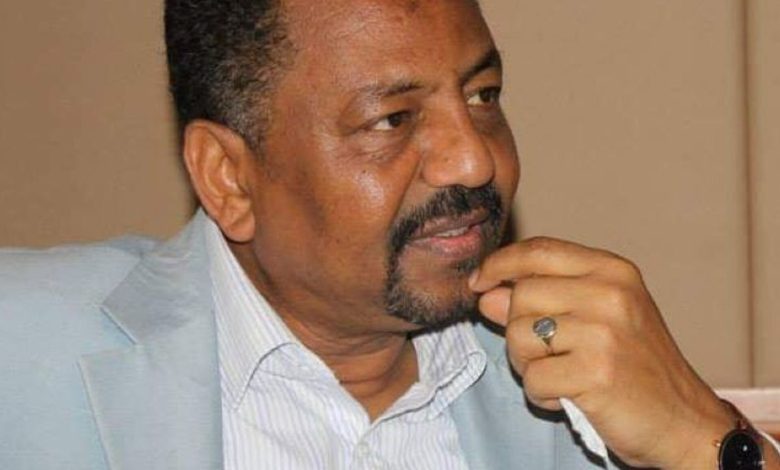Opinion
The Al-Mirghani-Garang Agreement: Separating the South (1-2)

By Ali Askouri
These articles shed light on a critical historical period, one whose witnesses are still alive. We write so that new generations can understand the background of the conflicts and the facts that led to the current situation in our country. The roots of these issues are tied directly to the 1986 elections and subsequent events, which altered the course of Sudan’s history and led to the separation of the South. The rejection of the Al-Mirghani-Garang Agreement by the National Umma Party and the Islamic Front (at the time) was a pivotal moment, as this article will explain.
We also aim to refresh the memory of those who lived through that era, helping them contextualize the current stance of the National Umma Party and its alliance with militias. History is not merely a series of transient events; it is a continuum of interconnected social and political episodes. Every decision at the state level sets off a chain of interactions and outcomes, creating new realities and conflicts. Like other societies, we are subject to the same laws and patterns of life.
On November 16, 1988, Mr. Mohamed Osman Al-Mirghani, leader of the Democratic Unionist Party, and the late Dr. John Garang signed a peace agreement. Among its key stipulations were ending the war and organizing a constitutional conference. Even if this agreement were Al-Mirghani’s sole political achievement, it would suffice to cement his legacy as a man of peace with foresight who recognized the nation’s looming dangers and sought to prevent its disintegration.
Although the agreement was not implemented for reasons this article explores, Al-Mirghani remains the most prominent peace advocate in Sudan’s modern history. Supported by his political weight, party, and millions of citizens from both the North and South, he sought to end the bloodshed and achieve peace. However, self-serving political forces with short-term interests rejected the agreement, plunging the country into chaos that continues to unfold today.
When the agreement was signed, the civil war had lasted five and a half years (from May 16, 1983, to November 16, 1988), with military operations still limited in scope. During the democratic period, under Prime Minister Sadiq Al-Mahdi’s leadership, the war’s continuation over two and a half years marked a missed opportunity. Despite meeting with Garang, Al-Mahdi never initiated a peace proposal, even as his government was overthrown in a coup by the Islamic Front.
The Al-Mirghani-Garang Agreement marked a turning point in Sudanese history. Today’s killings and destruction stem from the rejection and derailment of that agreement.
We write as witnesses to those events, aiming to inform younger generations—those not yet born or too young to comprehend the unfolding crises—about the individuals and decisions that led our nation into ruin. The events of that era have left the nation’s political future in disarray.
In the 1986 parliamentary elections, 301 members were elected. The National Umma Party won 101 seats, the Democratic Unionist Party secured 63, and the Islamic Front took 51 seats (including 23 from the controversial “graduates’ constituencies” that violated democratic principles like one man, one vote). For instance, Ali Tamim Fartak won a seat with just 45 votes. This tactic exemplified the Islamists’ manipulative methods to gain power. (For more details, see my book, Tales of Deception.) Smaller Southern parties, independents, and others won 45 seats combined.
The war prevented elections in 41 Southern constituencies, roughly 14% of the parliament’s seats. The constitution still mandated that a parliamentary majority required 151 votes out of 301—not the reduced 131 needed from the 260 contested seats. Thus, the Umma Party lacked the majority to govern alone, making claims of being the “majority party” unsubstantiated.
Prime Minister Al-Mahdi should have prioritized peace to allow elections in the 41 unrepresented constituencies, legitimizing parliament and government institutions. However, completing elections in those constituencies risked Al-Mahdi’s premiership, as the likely beneficiaries would be the SPLM and its ally, the Democratic Unionist Party. Together, they could gain more seats than the Umma Party, tipping the balance of power.
If peace had been achieved and partial elections held in the 41 constituencies, the SPLM and the Democratic Unionist Party could have formed a majority coalition. This would have likely made John Garang Prime Minister. The rejection of the Al-Mirghani-Garang Agreement preserved Al-Mahdi’s premiership but at a devastating national cost.
Prominent Islamic Front leaders, such as the late Hassan Al-Turabi, failed to win voter trust in the 1986 elections. Despite his significant political influence, Al-Turabi lost both elections he contested against Democratic Unionist Party candidates. His deputy, Dr. Ali Al-Haj, also lost in Darfur, while Ibrahim Al-Sanousi avoided direct competition by running in a “graduates’ constituency,” a controversial move showing little confidence in grassroots support.
The Islamic Front’s narrow electoral victories reflected its limited appeal. Of its 28 seats, 13 were in Khartoum, where it received fewer votes (186,000) than the Democratic Unionist Party (192,387).
Al-Mirghani’s peace initiative cornered the Prime Minister. Accepting it would have jeopardized his political survival, while continuing the war allowed him to remain in power. Al-Turabi later revealed in a statement that the coup was discussed as the “best option” with Al-Mahdi. The delay in approving the peace agreement allowed time to prepare for the Islamic Front’s coup, ensuring the war’s continuation and plunging the nation deeper into conflict.
To be continued…
(This Land is Ours)



